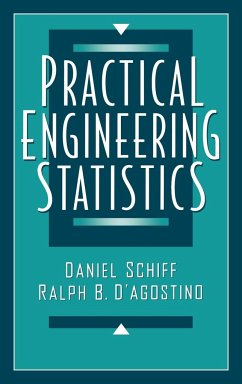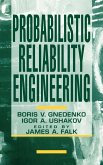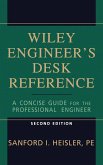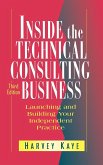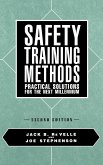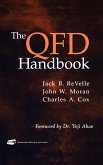PRACTICAL ENGINEERING STATISTICS This lucidly written book offers engineers and advanced students all the essential statistical methods and techniques used in day-to-day engineering work. Without unnecessary digressions into formal proofs or derivations, Practical Engineering Statistics shows how to select the appropriate statistical method for a specific task and then how to apply it correctly and confidently. Clear explanations supported by real-world examples lead the reader step-by-step through each procedure. Topics covered include product design and development; estimations of the mean value and variability of measured data; comparison of processes or products; the relationships between variables; and more. With its emphasis on practical use and its full range of engineering applications, Practical Engineering Statistics serves as an indispensable, time-saving reference for all engineers working in design, reliability, assurance, scheduling, and manufacturing. PRACTICAL ENGINEERING STATISTICS While engineers are frequently involved in projects that require the application of statistical methods to analysis, prediction, and planning, their background in statistics is often insufficient to the task. In many cases the engineer has had little training in statistics beyond the concepts of the mean, the standard deviation, the median, and the quartile. Even those who have had one or more courses in statistics will, at times, encounter problems which are beyond their capacity to solve or understand. Practical Engineering Statistics is designed to give engineers the knowledge to select the statistical approach that is most appropriate to the problem at hand and the skills to confidently apply this approach to specific cases. It provides the engineer with the statistical tools needed to perform the job effectively, whether it is pro-duct design and development, estimation of the mean value and variability of measured data, comparison of processes or products, or the relationship between variables. Its authors bring two different areas of expertise to this unique book: statistics and engineering physics. In Practical Engineering Statistics their collaboration has produced a book that clearly leads engineers step-by-step through each procedure, without time-consuming and unnecessary discussions of proofs and derivations. Statistical procedures are discussed and explained in detail and demonstrated through real-world sample problems, with correct answers always provided. Readers learn how to determine which data represent true observations and which, through human error or flawed data, are false observations. Complex problems are presented with computer printouts of the database, intermediate steps, and results. Numerous illustrations and tables of all commonly used distributions enhance the usefulness of this invaluable book. Virtually all engineers and advanced students, especially those in mechanical, civil, electrical, aerospace, and chemical engineering, Practical Engineering Statistics is an indispensable reference that will give them the tools to do the statistical part of their work quickly and accurately.
Hinweis: Dieser Artikel kann nur an eine deutsche Lieferadresse ausgeliefert werden.
Hinweis: Dieser Artikel kann nur an eine deutsche Lieferadresse ausgeliefert werden.

